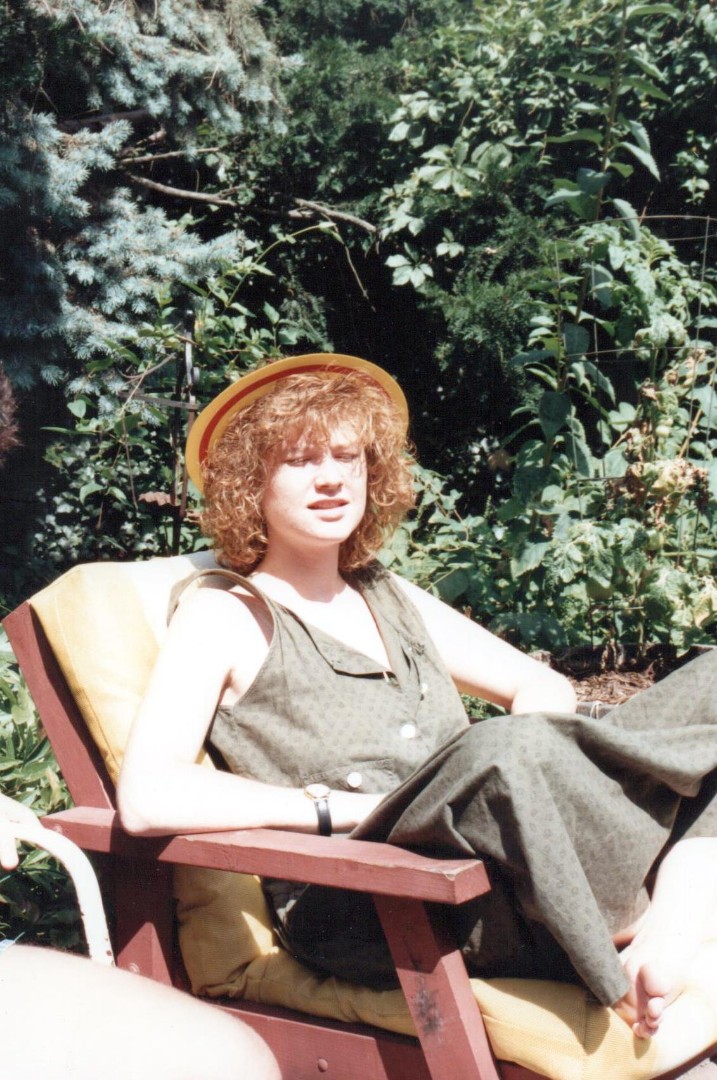Patricia De Angelis
This month’s Conservation Champion, Patricia de Angelis, embodies the ethic of building community. For more than 20 years, she has worked toward bringing federal agencies together within the Plant Conservation Alliance to support native plant conservation. She knows that public awareness of plants is linked to the funding support that plant initiatives and plant staff positions receive. Her amazing career benefited from all the experiences she has had—from a childhood secret garden to her work with Indigenous People in Nicaragua, to her work as a botanist in the U.S. Fish and Wildlife Service. We salute you, Patricia!
When did you first fall in love with plants?
“Plant awe” has been a continual thread in my life. I think the most significant impactful experience came as a young teenager when I found solace, pleasure, beauty, and comfort working in the backyard of my family home. Tucked away behind a high wall covered in grapevine was my own “secret garden” with brick pathways, shady spaces, and a fish pond. My father’s sculptures were artfully tucked amongst beds of ivy, walnut trees, yew, and planters full of flowers. No passerby could resist stopping to peer through the gate and marvel. I worked out many a problem as I clipped, shaped, and planted in that magical space.
What was your career path to becoming a botanist with the Fish and Wildlife Service?
My career path meandered across the field of botany. During college, I was a Biological Aid to a renowned tree geneticist at the USDA-Agricultural Research Service National Arboretum, where I helped measure natural defense mechanisms of trees. After college, I worked as a Lab Technician at the USDA-Agricultural Research Service Foreign Disease-Weed Science Unit, learning to identify foreign pathogens, then as a research technician analyzing the effectiveness of plant extracts to protect human cells against HIV.
When my beau-turned-husband became a Foreign Service Officer, we moved to Nicaragua and I found a job with a non-governmental organization. I assessed botanical resources in a newly created protected area and collaborated with the Miskito Indians to document everyday plant usage in Miskito society. This formed the basis of my doctorate.
After returning to the United States, I attended a medicinal plant industry symposium where I learned about the U.S. Fish and Wildlife’s involvement in the sustainable use and conservation of plants and animals regulated under the Convention on International Trade in Endangered Species of Wild Fauna and Flora. A botanist job soon opened with the Plant Conservation Alliance (PCA) – the position that I am still in 20 years later. And all of my previous experience contributes to the work I do today.
After returning to the United States, I attended a medicinal plant industry symposium where I learned about the U.S. Fish and Wildlife’s involvement in the sustainable use and conservation of plants and animals regulated under the Convention on International Trade in Endangered Species of Wild Fauna and Flora. A botanist job soon opened with the Plant Conservation Alliance (PCA) – the position that I am still in 20 years later. And all of my previous experience contributes to the work I do today.
What advice do you have for newcomers to the field of plant conservation?
Connect! Explore! Be Brave!
Seek out groups focused on issues that interest you, but stay open to novel opportunities. Connect with your native plant society, student networks – even PCA discussion lists and meetings! Listen to webinars and participate in field trips. Join a professional society, attend annual meetings, and speak to as many people as you can. Don’t be shy — most people love telling you about themselves and are happy to give ideas and pointers. Forge your own path!
How did you first become involved with the Plant Conservation Alliance?
The symposium I mentioned above was sponsored in part by the Plant Conservation Alliance-Medicinal Plant Working Group. There I met a vivacious, energetic force named Peggy Olwell, the National Botanist for the Bureau of Land Management and then Chair of the Plant Conservation Alliance Federal Committee, who invited me to attend the Plant Conservation Alliance meetings. Jobless and fresh off earning my Ph.D., it was at a PCA meeting that I heard of the opening at Fish and Wildlife Service.
I was thrilled to land a job as a Botanist. As part of my responsibilities, I became Chair of the Medicinal Plant Working Group and the FWS Federal Liaison to the PCA. This enabled me to work professionally with Peggy Olwell and others I had met at the PCA meetings. It was an amazing alignment of the stars. And I would have never imagined that 20 years hence I would become the Chair of the Federal Committee!

How would you describe your role as chair of the PCA federal committee?
I network across agencies to address mutual needs. These include raising the visibility of native plants, drawing attention to the need for botanical skills and training to meet our nation’s botanical challenges, increasing national awareness to sustain and support native plant communities, and stimulating common messaging that will facilitate interagency efforts to address funding and staffing needs. I also work closely with the Chair of the Non-Federal Committee (who is a scientist at a CPC institution, by the way!) to engage in meaningful ways with that sector.

What PCA activities/initiatives are you currently working on?
A major project has been the continued implementation of the Plant Conservation Alliance’s National Seed Strategy for Rehabilitation and Restoration, which just completed its fifth year. Thanks to the leadership of our Liaison to the U.S. Geological Service, Molly McCormick, we recently finalized a federal progress report that demonstrates an impressive array of exciting progress.
To commemorate 25 years of the Plant Conservation Alliance, we are about to embark on an exciting national artwork challenge with the Fairchild Tropical Botanic Garden. School-aged children will compete across the United States and its Territories, then regional champs will enter a runoff to select a native plant as our ‘American Icon’ on a commemorative coin. Our ‘American Icons’ National Challenge webpage should launch soon.
What emerging science (methods, approaches, discoveries) and/or trends in plant conservation excite you most?
I am always thrilled by technological innovations that emulate the plant world. Flying microchips with sails designed after seeds? Love it! As an ethnobotanist, I am heartened by efforts to honor indigenous knowledge and engage in conservation efforts with Native American tribes, Alaska Native villages, and the indigenous people of the Hawaiian Islands. I hope that the UN Decade on Ecosystem Restoration will unite a global voice to underscore our true green infrastructure: the diverse native plant communities that form the backbone of our iconic habitats.
The PCA recently joined CPC as a network member. What does it mean to you to be connected to CPC?
The CPC and many CPC institutions have been Non-Federal Cooperators of the PCA for years, and it’s long overdue. The CPC was integral to the formation of the PCA, and we share a long history in the common goal to advance national plant conservation. The CPC and its network are a bastion of our Nation’s botanical expertise. There is no substitute for its vital role in maintaining the National Collection of Endangered Plants.